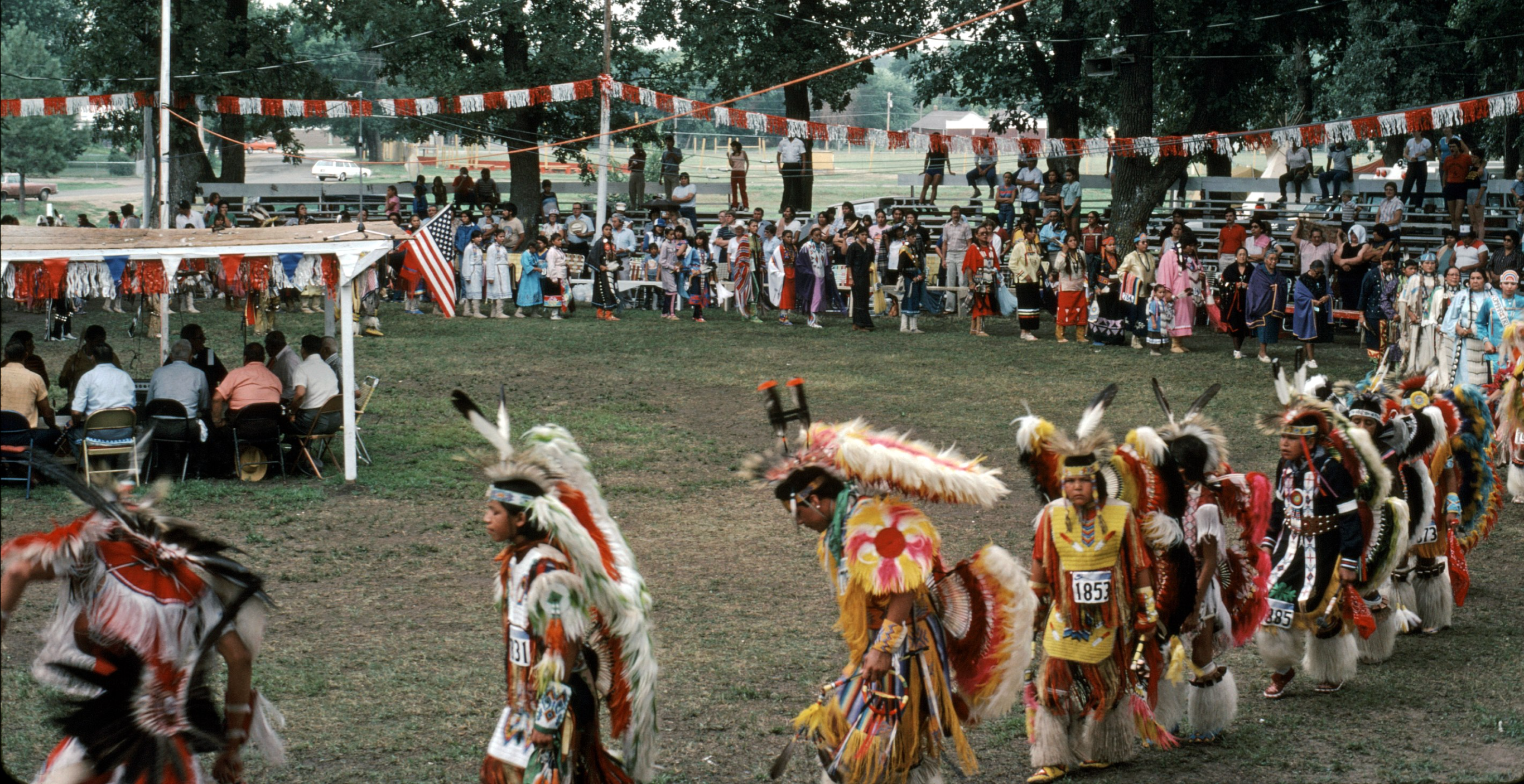4 Lesson Seven: Powwow
Overview

(Lee, 1983).
Powwows are a traditional celebration in which Indigenous culture is celebrated through various practices. Indigenous communities in Canada welcome both Indigenous and non-Indigenous peoples to participate and can be conducted on outdoor powwow grounds or indoor facilities.
Celebrations include:
- Traditional music and dances,
- Regalia (traditional outfits),
- Food,
- Crafts and vendors,
- Storytelling,
- Opening/closing prayers.
Traditional dances:
- The dancer is free to interpret the music in their way, moving in a clockwise direction with the other dancers. Different regalia are worn by males and females or for different styles of dances.
Drumming and singing:
- Drumming can either be an individual activity where one is in control, or there are large drums where multiple players are involved (typically men). Men typically hold the deeper octaves while singing, so they are the primary voices, but women can also participate as background singers providing the higher octaves in songs.
Activities:
- While performances such as drumming, singing, and dancing occur, powwows typically have vendors at the ceremony. Some include craft tables where people can make traditional items such as dreamcatchers or others sell their handmade goods. Traditional food, such as Bannock (fried bread) or other soups and meats, is also sold.
During the COVID-19 pandemic, many Indigenous communities throughout Canada could not host their powwows due to restrictions. The Summer Solstice Festivals created a virtual powwow page for people to still participate, and it is updated with recent performers. There are a variety of videos broken down into the different types of traditional dances, drumming and singing.
